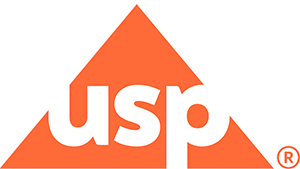- The use of in silico models to predict toxicity and its advantages over traditional in vitro and in vivo approaches
- Understanding the limitations of in silico techniques – how to avoid applying them blindly in every instance

Key learning points for this session:


| Cookie | Description |
|---|---|
| cookielawinfo-checkbox-analytics | This cookie is set by GDPR Cookie Consent plugin. The cookie is used to store the user consent for the cookies in the category "Analytics". |
| cookielawinfo-checkbox-analytics | This cookie is set by GDPR Cookie Consent plugin. The cookie is used to store the user consent for the cookies in the category "Analytics". |
| cookielawinfo-checkbox-functional | The cookie is set by GDPR cookie consent to record the user consent for the cookies in the category "Functional". |
| cookielawinfo-checkbox-functional | The cookie is set by GDPR cookie consent to record the user consent for the cookies in the category "Functional". |
| cookielawinfo-checkbox-necessary | This cookie is set by GDPR Cookie Consent plugin. The cookies is used to store the user consent for the cookies in the category "Necessary". |
| cookielawinfo-checkbox-necessary | This cookie is set by GDPR Cookie Consent plugin. The cookies is used to store the user consent for the cookies in the category "Necessary". |
| cookielawinfo-checkbox-non-necessary | This cookie is set by GDPR Cookie Consent plugin. The cookies is used to store the user consent for the cookies in the category "Non Necessary". |
| cookielawinfo-checkbox-non-necessary | This cookie is set by GDPR Cookie Consent plugin. The cookies is used to store the user consent for the cookies in the category "Non Necessary". |
| cookielawinfo-checkbox-others | This cookie is set by GDPR Cookie Consent plugin. The cookie is used to store the user consent for the cookies in the category "Other. |
| cookielawinfo-checkbox-others | This cookie is set by GDPR Cookie Consent plugin. The cookie is used to store the user consent for the cookies in the category "Other. |
| cookielawinfo-checkbox-performance | This cookie is set by GDPR Cookie Consent plugin. The cookie is used to store the user consent for the cookies in the category "Performance". |
| cookielawinfo-checkbox-performance | This cookie is set by GDPR Cookie Consent plugin. The cookie is used to store the user consent for the cookies in the category "Performance". |
| PHPSESSID | This cookie is native to PHP applications. The cookie is used to store and identify a users' unique session ID for the purpose of managing user session on the website. The cookie is a session cookies and is deleted when all the browser windows are closed. |
| PHPSESSID | This cookie is native to PHP applications. The cookie is used to store and identify a users' unique session ID for the purpose of managing user session on the website. The cookie is a session cookies and is deleted when all the browser windows are closed. |
| viewed_cookie_policy | The cookie is set by the GDPR Cookie Consent plugin and is used to store whether or not user has consented to the use of cookies. It does not store any personal data. |
| viewed_cookie_policy | The cookie is set by the GDPR Cookie Consent plugin and is used to store whether or not user has consented to the use of cookies. It does not store any personal data. |
| Cookie | Description |
|---|---|
| _stripe_mid | This cookie is set by the payment processor Stripe. It is used to assist with user identification and fraud prevention during the processing of payments. |
| _stripe_mid | This cookie is set by the payment processor Stripe. It is used to assist with user identification and fraud prevention during the processing of payments. |
| _stripe_sid | This cookie is set by the payment processor Stripe. It stores a unique session ID for the purpose of managing the user session during the checkout process. The cookie is a session cookies and is deleted when all the browser windows are closed. |
| _stripe_sid | This cookie is set by the payment processor Stripe. It stores a unique session ID for the purpose of managing the user session during the checkout process. The cookie is a session cookies and is deleted when all the browser windows are closed. |
| AWSALB | AWSALB is a cookie generated by the Application load balancer in the Amazon Web Services. It works slightly different from AWSELB. |
| AWSALB | AWSALB is a cookie generated by the Application load balancer in the Amazon Web Services. It works slightly different from AWSELB. |
| AWSALBCORS | AWSALB is a cookie generated by the Application load balancer in the Amazon Web Services. |
| AWSALBCORS | AWSALB is a cookie generated by the Application load balancer in the Amazon Web Services. |
| ls_smartpush | This cookie is set by Litespeed Server and allows the server to store settings to help improve performance of the site. |
| ls_smartpush | This cookie is set by Litespeed Server and allows the server to store settings to help improve performance of the site. |
| one_signal_sdk_db | This cookie is set by OneSignal push notifications and is used for storing user preferences in connection with their notification permission status. |
| one_signal_sdk_db | This cookie is set by OneSignal push notifications and is used for storing user preferences in connection with their notification permission status. |
| Cookie | Description |
|---|---|
| _ga | This cookie is installed by Google Analytics. The cookie is used to calculate visitor, session, campaign data and keep track of site usage for the site's analytics report. The cookies store information anonymously and assign a randomly generated number to identify unique visitors. |
| _ga | This cookie is installed by Google Analytics. The cookie is used to calculate visitor, session, campaign data and keep track of site usage for the site's analytics report. The cookies store information anonymously and assign a randomly generated number to identify unique visitors. |
| _gat_gtag_UA_10556842_35 | Google uses this cookie to distinguish users. |
| _gat_gtag_UA_10556842_35 | Google uses this cookie to distinguish users. |
| _gat_tt | This cookie is installed by Google Analytics. The cookie is used to throttle the request rate. |
| _gat_tt | This cookie is installed by Google Analytics. The cookie is used to throttle the request rate. |
| _gid | This cookie is installed by Google Analytics. The cookie is used to store information of how visitors use a website and helps in creating an analytics report of how the website is doing. The data collected including the number visitors, the source where they have come from, and the pages visited in an anonymous form. |
| _gid | This cookie is installed by Google Analytics. The cookie is used to store information of how visitors use a website and helps in creating an analytics report of how the wbsite is doing. The data collected including the number visitors, the source where they have come from, and the pages viisted in an anonymous form. |
| wow.anonymousId | This cookie from Communigator tracks an anonymous visitor ID. |
| wow.anonymousId | This cookie from Communigator tracks an anonymous visitor ID. |
| wow.schedule | This standard session cookie served by the web server enables Communigator to track the Load Balance Session Queue. |
| wow.schedule | This standard session cookie served by the web server enables Communigator to track the Load Balance Session Queue. |
| wow.session | This standard session cookie served by the web server enables Communigator to track the Internet Information Services (IIS) session state. |
| wow.session | This standard session cookie served by the web server enables Communigator to track the Internet Information Services (IIS) session state. |
| wow.utmvalues | This cookie from Communigator stores the UTM values for the session. UTM values are specific text strings that are appended to URLs that allow Communigator to track the URLs and the UTM values when they get clicked on. |
| wow.utmvalues | This cookie from Communigator stores the UTM values for the session. UTM values are specific text strings that are appended to URLs that allow Communigator to track the URLs and the UTM values when they get clicked on. |
| zform_campaign_source | This cookie records the marketing campaign source if it exists as a parameter e.g. zcs=campaign_source. |
| Cookie | Description |
|---|---|
| NID | This cookie is used to a profile based on user's interest and display personalized ads to the users. |
| NID | This cookie is used to a profile based on user's interest and display personalized ads to the users. |